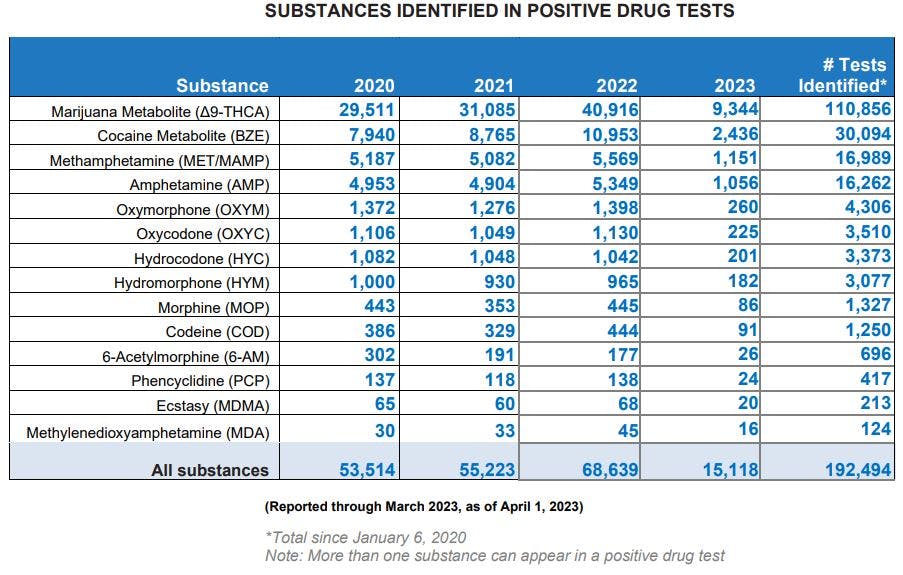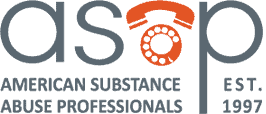By: Scott Achelpohl
A leading nationwide drug-testing lab has found that positive test results for marijuana following on-the-job accidents reached a 25-year high in 2022 among the entire U.S. workforce, while the U.S. government’s Drug & Alcohol Clearinghouse also reflects a 31% jump last year in positive THC tests among the segment of employees most critical to trucking: commercial drivers.
According to a new and wide-ranging analysis by nationwide testing network Quest Diagnostics released on May 18, post-accident positive marijuana urine tests in the U.S. workforce overall were 7.3% in 2022 compared to 6.7% in 2021. The new peak follows a steady increase in post-accident marijuana positivity every year from 2012 to 2022, according to Quest. In those 10 years, post-accident marijuana positivity increased by 204.2%, while from 2002 to 2009 positivity declined.
The Quest report is based on more than 10.6 million test results from various methods reported between January and December 2022.
The 2022 rise coincides with legalization of recreational use of marijuana and products containing THC in many states and the District of Columbia, according to a Quest release on the study’s findings. In 2012, Colorado and Washington became the first states to legalize recreational marijuana use. Since then, 19 more states and D.C. have legalized recreational use and 38 plus D.C. have sanctioned it for medicinal purposes. Federal law, though, prohibits use of marijuana for any reason.
“Intoxicating cannabis products, including marijuana, can have a major impact on safety at work and have been proven to slow reaction time, impact memory, and impair skills essential to driving. State legalization of the drug creates new challenges for employers,” said Katie Mueller, a senior program manager at the National Safety Council focusing on cannabis safety.

“The Quest data provide compelling evidence that increased use of cannabis products by employees can contribute to greater risk for injuries in the workplace. It is imperative employers take the proper steps to create and maintain a policy that addresses cannabis use, build a safety-focused culture, and educate the workforce to keep all workers safe on and off the job,” Mueller added in the release.
Marijuana positives way up among CDL-holders
According to the Drug & Alcohol Clearinghouse, which is run by the Federal Motor Carrier Safety Administration and maintains records of drug screenings that truck drivers must by law undergo, 40,916 CDL-holders tested positive for THC last year, up significantly from 31,085 in 2021 and higher still than the 29,511 in 2020. THC is the psychoactive ingredient in marijuana and can bring on euphoria and a sense of relaxation, though it heightens perception in some people.
Marijuana is by far the most prevalent illicit drug of choice among commercial vehicle operators whose positive tests have been reported to the clearinghouse.
While more than 40,000 tested positive for THC last year, the next closest substance in 2022 was the stimulant cocaine, with 10,953 positives, clearinghouse data shows. And truck drivers are not just tested after they are involved in accidents. At several other points—at the pre-employment stage and randomly, to name two others—they must be screened so the clearinghouse results reflect tests of commercial drivers at any stage.
Many U.S. workers overall, including commercial drivers, must be drug-tested after they are involved in an accident. Once a commercial driver tests positive for any illicit drug or is found over the legal limit for alcohol use, that result is reported to the Drug & Alcohol Clearinghouse and can have a profound impact on a driver’s livelihood. Because, upon a positive test, a CDL-holder is prohibited from driving, is entered into a return-to-duty (RTD) status, and must follow a regimen of counseling, monitoring, and follow-up testing. He or she must clear that process before getting back behind the wheel of a commercial vehicle.
Since early 2020, when the current reporting system kicked off, 180,664 CDL-holders have had positive test results for drugs of all kinds (110,856 for marijuana alone) reported to the clearinghouse, with 129,100 placed in prohibited status, meaning they can never drive commercially again. Another 97,833 have tested positive but have been placed in the RTD process and haven’t exited that process, meaning they’ve abandoned their CDLs or are driving illegally.
An analysis by Construction Equipment, a sister publication to FleetOwner, found that marijuana substantially affects construction fleets’ ability to find workers. While almost universally lauding the safety benefits of the driver drug-testing system, the on-road trucking community has harped on its effect on the driver shortage.
Oral-fluid testing of drivers to start soon (maybe)
U.S. transportation workers, including truck drivers, will be able to be tested for drug use in two ways, through long-sanctioned urinalysis or by screening their oral fluids. That’s because, after more than a year of debate over a proposed rulemaking, the U.S. Department of Transportation on May 2 officially sanctioned saliva testing as a method acceptable for the Drug & Alcohol Clearinghouse.
The new oral-testing rule is supposed to go into effect June 1. However, freight carriers must wait until the U.S. Department of Health and Human Services certifies two laboratories—one as a primary specimen lab and one as a secondary laboratory—to implement the testing method as an alternative to urinalysis. HHS has not yet done so, leaving a regulatory roadblock possibly still in the way beyond June 1. Hair-follicle screening, meanwhile, remains barred from being submitted to the federal clearinghouse—a fact that riles many trucking industry stakeholders—though many fleets still use it on their own to pre-screen driver applicants.
More results from the Quest Diagnostics Drug Test Index show that the combined U.S. workforce urine drug positivity for all drugs in 2022 was 4.6%, the highest level in two decades. The 2021 and 2022 rates were the highest since 2001, up more than 30% from an all-time low from 2010 to 2012.
The Quest study also takes a deep dive into cocaine, amphetamine, and heroin positive results among U.S. workers.

While marijuana was the main driver of workforce positivity increases in the U.S. workforce, amphetamine positivity also contributed to the increase, according to the Quest report. Positivity for marijuana among U.S. workers increased 10.3% (4.3% positivity in 2022 versus 3.9% positivity in 2021), and amphetamine positivity rose 15.4% (1.5% positivity in 2022 versus 1.3% positivity in 2021). While Quest’s data on amphetamines doesn’t differentiate between prescribed medications and illicit substances, the increase correlates with other data suggesting that amphetamines, prescribed or illicit, have grown in recent years in the U.S.
The rising overall drug positivity rate for workforce urine testing was observed widely across U.S. industries. Over the past five years, the workforce positivity rate climbed in most industry sectors, led by accommodation and food services, increasing 42.9% (4.9% in 2018 versus 7% in 2022); retail, which rose 42.6% (5.4% in 2018 versus 7.7% in 2022); and finance and insurance, where positivity increased 38.5% (2.6% in 2018 versus 3.6% in 2022).
“Our 2022 Quest Diagnostics analysis shows that the overall U.S. workforce positivity rate continued to be at a historically elevated level in 2022, even as much of the nation’s workforce returned to the office post-pandemic,” said Keith Ward, Quest’s general manager and VP for employer solutions. “This historic rise seems to correspond with sharp increases in positivity for marijuana in both pre-employment and post-accident drug tests, suggesting that changing societal attitudes about marijuana may be impacting workplace behaviors and putting colleagues at risk.”
Achelpohl (2023). Article retrieved from FleetOwner, Operations.





